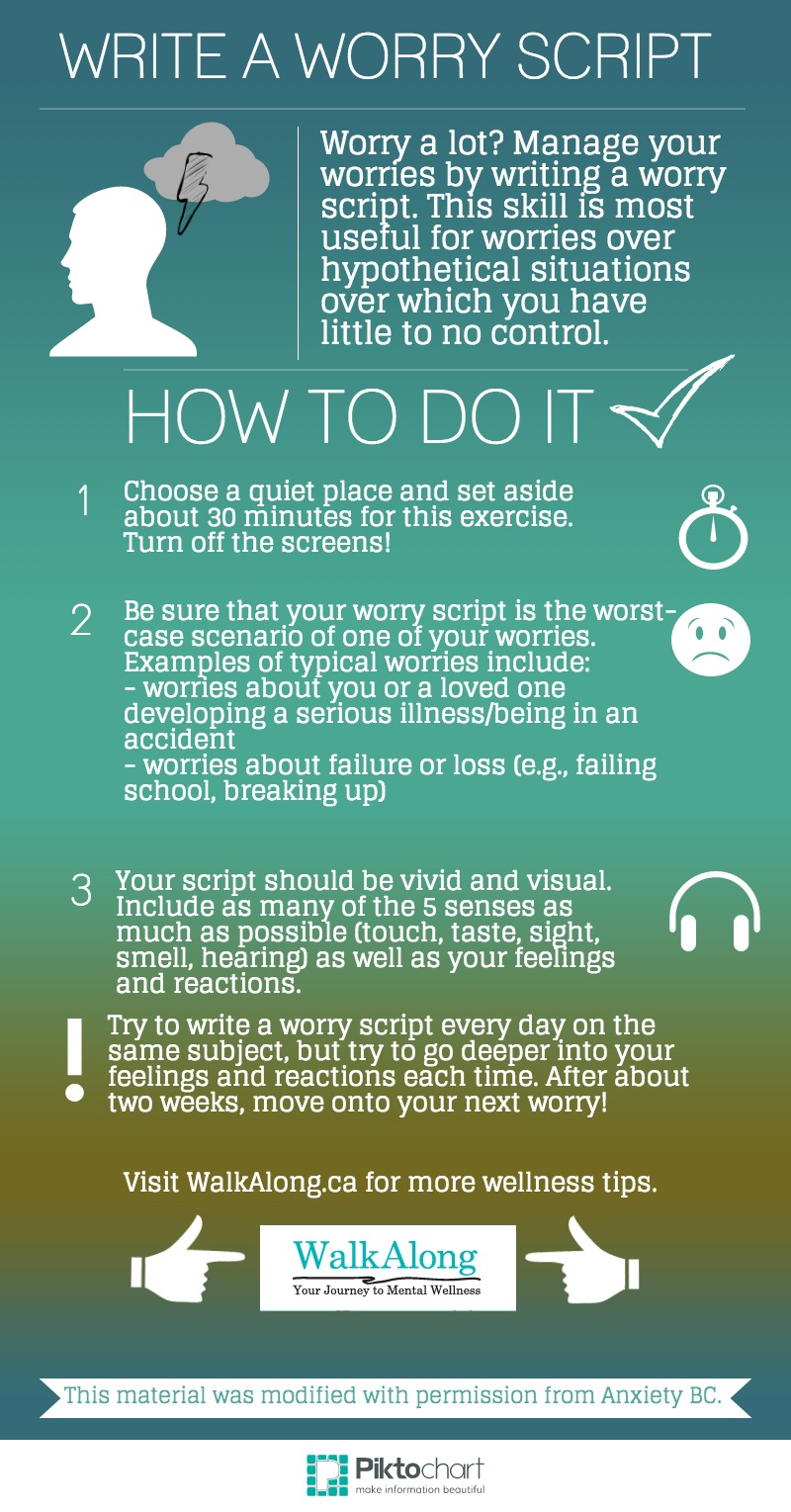 A helpful tool in managing your excessive worries involves writing a worry script. This skill is most useful for worries about hypothetical situation over which you have little to no control.
A helpful tool in managing your excessive worries involves writing a worry script. This skill is most useful for worries about hypothetical situation over which you have little to no control.
Why is a worry script helpful?
Research shows us that people with Generalized Anxiety Disorder (GAD) have a hard time dealing with their negative emotions, such as sadness or fear. They either try to push the negative feelings away, or they keep switching worry topics. Unfortunately, neither of these techniques work. Rather than putting all of your energy into avoiding upsetting thoughts and images, you can instead face your fears. By writing a worry script about your biggest worry, you will be facing those negative thoughts and bad feelings. You will also get a clear picture of what out are really afraid of. People who write a worry script for a few weeks report that they feel less anxious about the worry topic they were working on.
How to write a worry script:
- Choose a place where you won’t be interrupted (turn off your cellphone and television!) and set aside about 30 minutes to complete this exercise.
- Be sure that your worry script is the worst-case scenario of one of your worries.
- Examples of typical worries include:
- Worries about you or a loved one developing a serious illness
- Worries about you or a loved one being in an accident, getting injured, abducted or killed
- Worries about failure or loss in your future (e.g., losing your job, breaking up with your partner, failing school)
- Your script should be vivid and visual. That is, it should include the five senses as much as possible (touch, taste, sight, smell, hearing) as well as your feelings and reactions.
- Try to write a worry script every day on the same subject, but try to go deeper into your feeling and reactions each time. After about two weeks you can move on to your next worry.
IMPORTANT: If you are feeling anxious, upset, or tearful while writing your script, you are on the right track! Your worry script is about your worst-case scenario, so it is suppose to be upsetting. This exercise is designed to help you get over your worries and anxiety in the long-term.
This material was modified from and with the permission of AnxietyBC.


